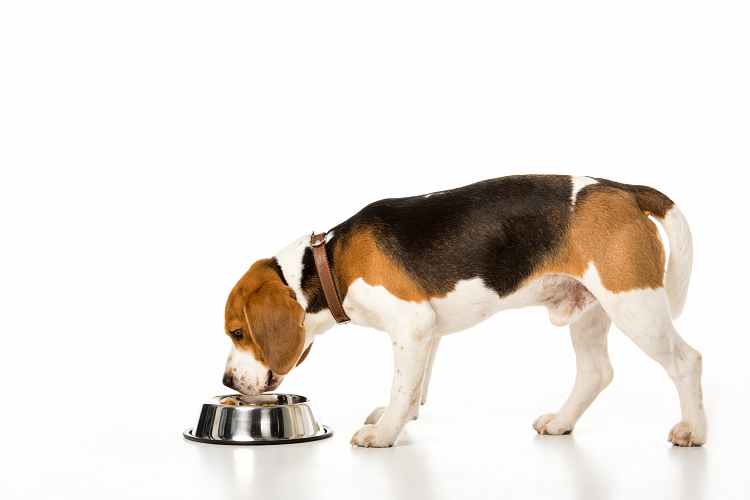Nutritional management of liver disease
The liver plays a key role in the metabolism of protein, carbohydrates and fat and is responsible for important physiological functions related to e.g. digestion, synthesis and storage, coagulation, and detoxification.
These liver functions can be affected during different types of liver disease, such as chronic hepatitis, fibrosis, hepatic lipidosis, portosystemic shunts and copper-associated hepatopathy, or secondary to other disorders.
Initial liver damage can progress and ultimately result in liver failure.
In early liver disease clinical signs can be minimal, but as liver disease progresses, more severe clinical signs such as hepatic encephalopathy, cholestasis or urate urolithiasis can become evident.
Nutritional management of liver disease is important for
 |
Supporting maintenance of normal metabolic functions | ||
 |
Minimising clinical signs | ||
 |
Reducing progression of hepatic insufficiency |
Liver function and clinical signs can vary for each patient so there is not one general liver diet and optimal dietary advice for each liver patient should be made on an individual basis.
Adaptation of dietary protein for support of liver patients
In healthy animals, ammonia, the degradation product of protein catabolism, is metabolised by the liver into urea, which will subsequently be excreted by the kidneys in the urine. During liver failure the conversion of ammonia into urea is reduced and blood levels of ammonia will rise. Hyperammonaemia is considered as one of the major causes of hepatic encephalopathy, a neurophysiologic disorder caused by liver insufficiency.
Aromatic amino acids can also contribute to encephalopathy; aromatic amino acids can only be broken down by the liver and liver insufficiency is associated with increased blood levels of aromatic amino acids, which can act as false neurotransmitters. Non-digested sulphur-containing amino acids are metabolised by intestinal microbiota into mercaptans, which are generally broken down by the liver. In liver disease, this can be disturbed and mercaptans can also play a role in the pathogenesis of hepatic encephalopathy.

Protein restriction in liver patients with hepatic encephalopathy
Classical liver diets are restricted in protein to reduce hyperammonaemia and clinical signs of hepatic encephalopathy. Reduced protein intake will indeed reduce the production of ammonia and signs of hepatic encephalopathy, however the dietary protein level must remain sufficiently high to meet the protein requirement of liver patients. As the liver has a high regeneration capacity, extra protein may be needed for regeneration of liver tissue and the protein requirement of liver patients might be increased compared to healthy adult cats and dogs.

Protein in a liver diet should be highly digestible, because undigested protein can be metabolised by intestinal bacteria to protein metabolites such as ammonia, which can be absorbed in the blood and contribute to hyperammonaemia. Fermentable fibres can help to reduce absorption from volatile ammonia into the blood by reducing the intestinal pH which causes the conversion of ammonia to water-soluble ammonium, which is then excreted though the faeces. Zeolite, natural volcanic ash, can bind ammonium in the intestinal tract and further help to reduce hyperammonaemia.
For management of patients with hepatic encephalopathy, it is important to balance the protein level in the diet so that it is low enough to reduce clinical signs of encephalopathy and at the same time provide sufficient protein to meet the protein requirement to maintain nitrogen-balance, the plasma level of albumin and muscle mass. Plasma albumin and signs of hepatic encephalopathy should be closely monitored and the dietary protein level adapted accordingly.
Dietary protein for liver patients without hepatic encephalopathy
For liver patients without signs of hepatic encephalopathy it is not recommended to feed a protein-restricted diet. As the protein requirement in liver patients is often increased for support of regeneration of the liver it is recommended to provide a highly digestible diet with sufficient protein. Liver disease can be associated with gastrointestinal signs, nausea and reduced feed intake. It is therefore advised to feed multiple small meals of a highly digestible diet spread over the day and to monitor feed intake to assure that the energy and nutrient needs are met.

Cholestasis
The liver plays an important role in breakdown and synthesis of fats, cholesterol, bile acids and fatty acids. Most patients with liver disease tolerate fat well, but in serious cases of cholestasis fat maldigestion occurs and a low-fat diet should be advised. Increased dietary levels or supplementation of fat-soluble vitamins are required to prevent fat-soluble vitamin deficiencies.
Copper-associated hepatopathy
Copper is excreted from the body through bile. In case of liver disease, copper excretion can be reduced and copper can accumulate in the liver. High hepatic copper levels are hepatotoxic and contribute to further deterioration of the liver function. Therefore, it is recommended to restrict copper in diets for liver patients.
Some dog breeds (such as Bedlington Terriers and Labrador Retrievers) can have a genetic defect in the copper excretion. They will accumulate copper in their liver and this will lead to copper-associated liver disease. Also these dogs will benefit from a copper-restricted diet to prevent development of liver disease. Increased zinc intake can help to reduce copper absorption.
Urate urolithiasis
Urate urolithiasis is promoted by a high urinary concentration of urate and a low urine pH. In healthy animals, purine nucleotides, from endogenous and dietary origin, are metabolised by the liver into allantoin. During liver disease, especially in case of portal vascular anomalies, the conversion of purines to allantoin can be reduced and purines will be broken down to urate, which is excreted in the urine. Because urate is poorly soluble, especially at low urine pH, liver failure is associated with an increased risk of urate urolithiasis.
For reduction of urate urolithiasis it is recommended to reduce the intake of dietary purines by reducing the dietary protein level and selecting low-purine protein sources such as egg and dairy protein. Induction of alkaline urine increases the solubility of urate. Additional medication with allopurinol can be used, but this should always be combined with a low-purine diet to prevent formation of xanthine uroliths.
Hepatic lipidosis
Feline hepatic lipidosis is the most common cause of liver disease in cats. Feline hepatic lipidosis can be a primary idiopathic disorder or secondary to other diseases (such as diabetes, pancreatitis and gastrointestinal disease) related to a period of anorexia. Disruption of the balance between the supply of fatty acids and triglycerides into the liver and beta-oxidation of fatty acids and removal of triglycerides in VLDL out of the liver causes accumulation of fat in the liver. It is hypothesised that anorexia increases lipolysis followed by an increased flow of fatty acids from the adipose tissue into the liver, which overwhelms the capacity to transport triglycerides out of the liver as result of reduced production of lipoproteins caused by amino acids deficiency.
Feline hepatic lipidosis requires vigorous dietary management with rehydration and highly digestible, enteral nutrition to meet the energy and nutrient requirement. Tube feeding is recommended to ensure that the energy requirement is met; the diet should be gradually introduced over a period of 5-7 days to finally reach at least the cat’s daily resting energy requirement. To allow for regeneration of liver tissue and because amino acid deficiency may reduce lipoprotein synthesis a complete diet with a high level of high quality protein is recommended.
Hepatic lipidosis in dogs is less common than in but requires a similar nutritional approach.
SPECIFIC diets for nutritional support of liver disease
| Clinical syndrome of liver disease / type of liver disease | Major feature of nutritional support | SPECIFIC diets for dogs | SPECIFIC diets for cats |
| Hepatic encephalopathy |
Restricted protein level, just low enough to reduce signs of hepatic encephalopathy High quality protein |
CKD / CKW Heart & Kidney Support Slightly less restricted protein level: |
FKD / FKW / FKW-P Kidney Support Slightly less restricted protein level: |
| Cholestasis | Restricted fat level | CID-LF / CIW-LF Digestive Support Low Fat CRD-1 / CRW-1 Weight reduction CRD-2 Weight Control CGD Senior |
FRD / FRW Weight Reduction FXD Adult |
| Copper-associated hepatopathy | Controlled copper level | CKD / CKW Heart & Kidney Support CDW Food Allergen Management |
FKD / FKW / FKW-P Kidney Support FDW Food Allergen management FGW Senior |
| Urate urolithiasis | Low purine level, inducing alkaline urine | CDD Food Allergen Management CKD / CKW Heart & Kidney Support |
FKD / FKW / FKW-P Kidney Support |
| Liver disease without hepatic encephalopathy, cholestasis or urolithiasis | Highly digestible complete diet, with sufficient protein for regeneration | CID / CIW Digestive Support CDD / CDD-HY / CDW Food Allergen Management COD-HY / COW-HY Allergen Management Plus |
FID / FIW Digestive Support FDD-HY / FDW Food Allergen Management FOD-HY / FOW-HY Allergen Management Plus |
| Hepatic lipidosis |
Vigorous tube feeding with highly digestible complete diet to meet energy and protein requirement |
F/C-IN-L Intensive Support |
|
